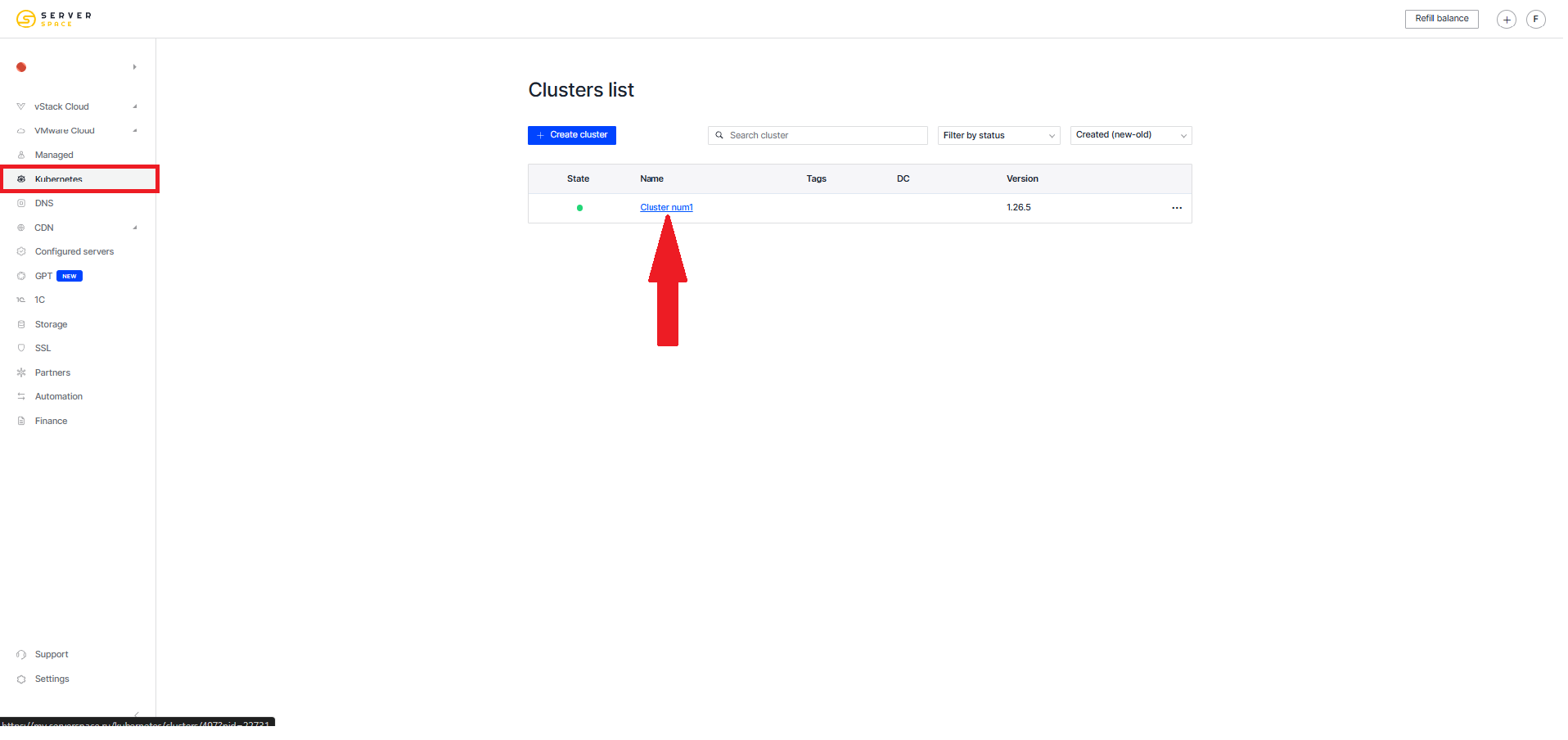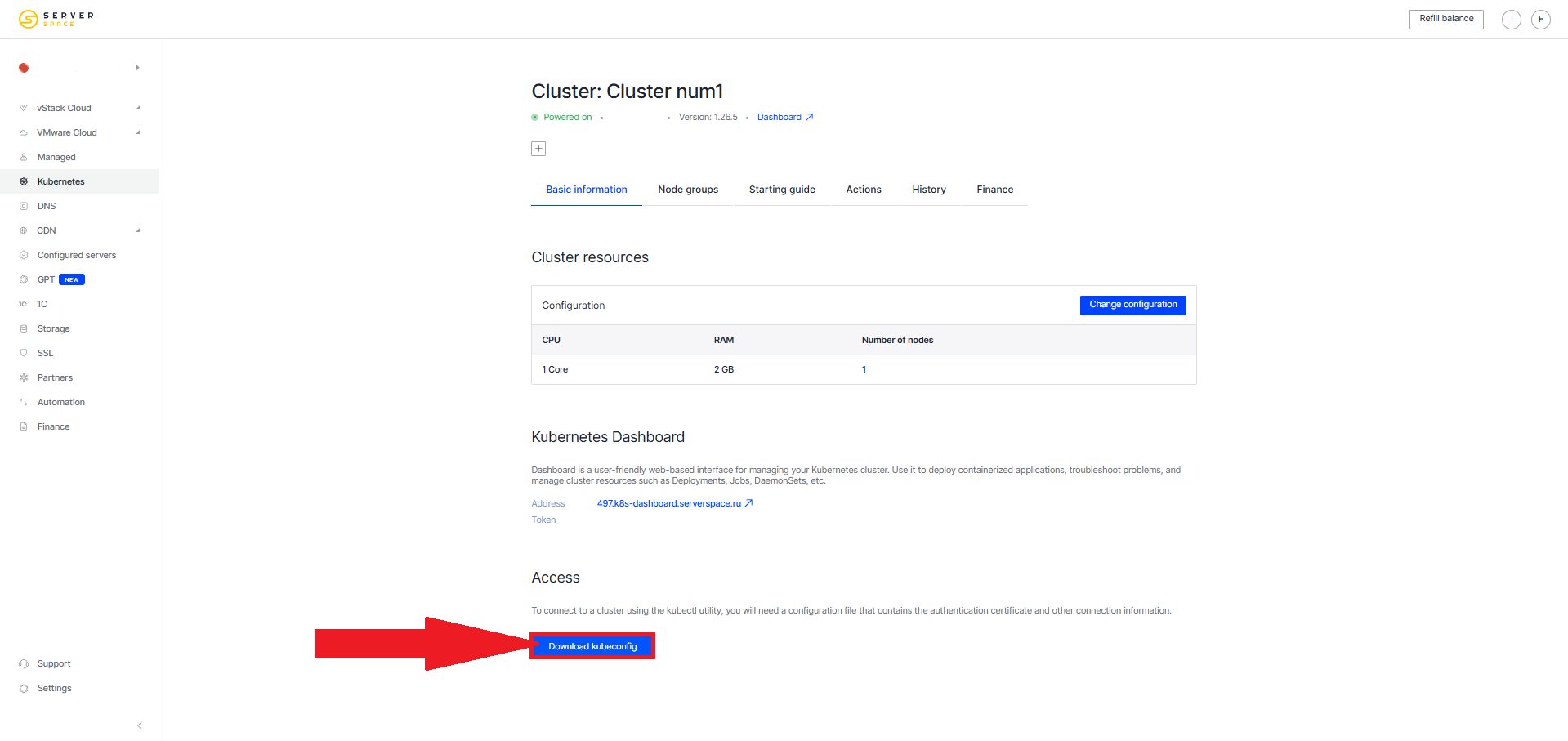To establish a connection with a Kubernetes cluster—whether from your local terminal or through an external management utility like kubectl—you need a special configuration file called kubeconfig. This file contains all the critical details required for authentication and secure access: the address of the API server, user tokens or access keys, context settings, and security credentials. It acts as a bridge between your machine and the cluster, ensuring that every request is authorized and routed correctly. Without this file, any remote interaction with the cluster becomes impossible or insecure. In this guide, we’ll walk you through the steps to locate and download your kubeconfig file directly from the Serverspace control panel, so you can begin managing your Kubernetes resources with confidence and safety.
Go to the Kubernetes section in the left-hand menu of the control panel and select the desired cluster:

This action will bring up the cluster configuration panel. In the Basic Information tab, scroll down to the bottom of the page to locate the Access section, where you'll find the option to download your kubeconfig file.

The kubeconfig file serves as the primary configuration for accessing a Kubernetes cluster. It includes essential connection details such as the API server endpoint, user authentication data, security certificates, and context settings. This file enables secure interaction with the cluster through command-line utilities like kubectl, as well as other tools that support Kubernetes integration. Without the kubeconfig file, remote management and automation tasks cannot be performed effectively.
FAQ: Frequently Asked Questions
- What should I do if I lose my kubeconfig file?
If you lose your kubeconfig file, you won’t be able to access or manage your Kubernetes cluster remotely. To resolve this, simply log in to the Serverspace control panel, navigate to the Kubernetes section, select your cluster, and download a new kubeconfig file from the Access section at the bottom of the Basic Information tab. - Can I use the same kubeconfig file on multiple devices?
Yes, the kubeconfig file can be securely transferred and used on multiple devices, such as different local machines or CI/CD environments — as long as access to the file is properly protected. - Is it safe to share my kubeconfig file?
No. The kubeconfig file contains sensitive credentials and access tokens. Sharing it could compromise your cluster’s security. Only authorized personnel should have access to this file. - How often should I update the kubeconfig file?
You should update your kubeconfig file if cluster credentials are rotated, access permissions change, or if you experience authentication errors. Always use the latest version provided in the control panel.



